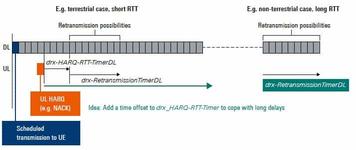
DNS-Doppler Navigation System: Basics and Functionality
Explore the DNS avionic system, a self-contained navigation aid used in aviation. Learn about its functionality, advantages, and disadvantages.
Showing 25 posts (Page 39 of 137)
Advertisement

Explore the DNS avionic system, a self-contained navigation aid used in aviation. Learn about its functionality, advantages, and disadvantages.
Explore a detailed comparison of DOCSIS 3.0, 3.1, and 4.0, including features, speeds, and benefits of each Data Over Cable Service Interface Specification.

Explore the benefits of DOCSIS 3.1 and DOCSIS 4.0 standards, including speed, efficiency, security, and application suitability for modern internet needs.

Explore the DOCSIS architecture, including cable modems (CM), CMTS, and HFC networks. Learn about DOCSIS versions and their data rates.
Explore DOCSIS RF frequency ranges and bandwidths for downstream and upstream traffic in various DOCSIS versions, covering DOCSIS 1.0 to 4.0.

Explore the benefits and drawbacks of Doherty amplifier architecture, including power efficiency, complexity, and application suitability.

Analyze Diagnostics over IP (DoIP) frames using our intelligent packet data logger. Perfect for Ethernet-based vehicle diagnostics.
Learn about DoIP (Diagnostic Communication over Internet Protocol), its benefits, and how it surpasses older diagnostic protocols like CAN and K-line in automotive diagnostics.

Learn about dominant modes in rectangular (TE10) and circular (TE11) waveguides, including characteristics, cutoff frequencies, and applications.
Learn about Doppler resolution in radar systems, its formula, and how it enables radars to differentiate between targets moving at different velocities.

Understand Doppler spread and coherence time, key concepts in wireless communication, and how they relate to fading and channel characteristics.

Explore the structure, operation, benefits, and drawbacks of Double Heterojunction (DH) LEDs. Learn about their higher efficiency and applications.

Explore DPSK modulation and demodulation techniques with block diagrams. Understand its advantages and disadvantages over BPSK, and its applications in wireless communication.

Explore the benefits and drawbacks of DPSK (Differential Phase Shift Keying) modulation, its process, and comparison with BPSK.

Explore the differences between DPSK and BPSK modulation techniques, including information representation, sensitivity to phase variations, and applications.

Explore 5 key pros and cons of DRAM (Dynamic Random Access Memory) in computer systems, including its volatility, speed, cost-effectiveness, and limitations.
Explore the distinctions between DRM (Digital Radio Mondiale) and DRM+, focusing on frequencies, bandwidth, audio quality, and bit rates for digital audio broadcasting.

Explore the frequency bands used for radio control of UAV drones, including UHF SRD, ISM 2.4 GHz, and ISM 5.8 GHz. Learn about power limits and related drone resources.
Explore the essential drone sensors, including accelerometers, gyroscopes, magnetometers, barometers, GPS, and distance sensors, and their roles in navigation and stability.

Explore the basics of drone swarm systems, their functionality, applications, and the technologies driving their development for various sectors.

Explore the benefits and drawbacks of drone swarm technology, including military applications, limitations, and scalability challenges.

Learn how Discontinuous Reception (DRX) is implemented in 5G non-terrestrial networks to improve battery life and optimize link efficiency.

Explore the distinctions between dry and wet cells, focusing on their construction, applications, advantages, and disadvantages.

Compare DSBSC vs SSBSC and explore the difference between DSB-SC and SSB-SC modulation techniques including their bandwidth, power consumption and applications.
This article compares DSL and cable modems, detailing their technology, data rates, and frequency spectrum usage for internet access.
Advertisement